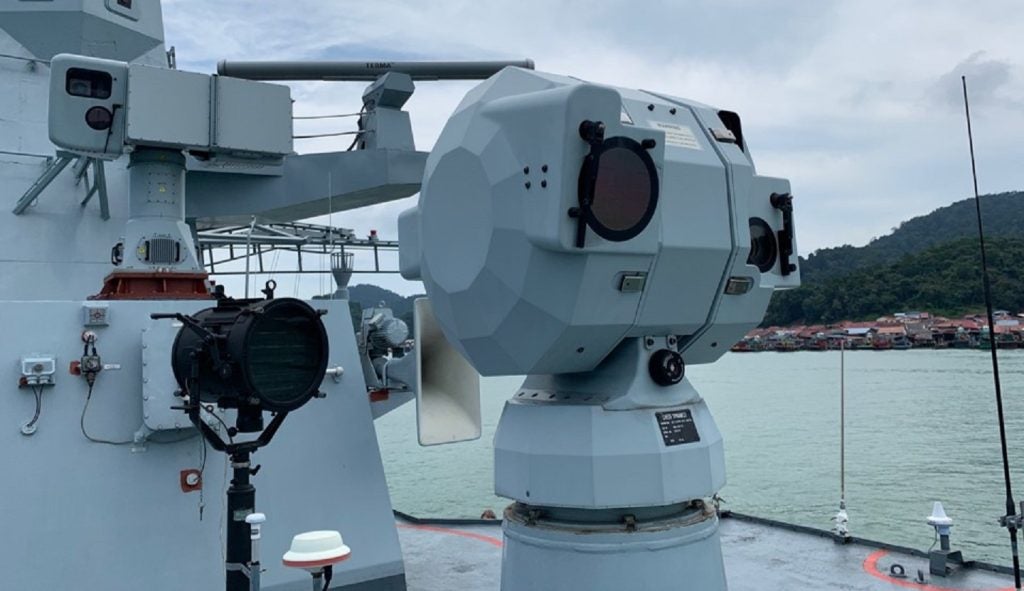The Kuznetsov Class heavy aircraft-carrying cruiser, also known as Project 1143.5 or Orel Class, was constructed at Nikolayev South Shipyard on the Black Sea in Ukraine. The lead vessel in the class, Admiral Kuznetsov, was launched in 1985 and is the only aircraft carrier in the Russian Navy.
The second vessel of the class, the Varyag, was launched in 1988. China purchased an upgraded version of the Varyag from Ukraine in 1998.
The hull design is based on the earlier Admiral Gorshkov, launched in 1982, but is larger, with a full load displacement of 58,500t compared to 40,400t.
The Admiral Kuznetsov supports strategic missile-carrying submarines, surface ships and maritime missile-carrying aircraft of the Russian fleet.
The Admiral Kuznetsov aircraft carrier was damaged in the PD-50 floating dock accident in October 2018. In December 2019, the vessel was further damaged in a fire during repair works in the first power unit. The aircraft carrier is currently docked at the Zvezdochka ship repair yard in Severodvinsk and expected to embark on sea trials in 2022.
Admiral Gorshkov/INS Vikramaditya
Admiral Gorshkov had not been operational since 1988 but, in January 2004, India signed an agreement to buy the vessel, which was to be extensively refurbished with new propulsion systems, weapons and modernisation of the deck for new aircraft.
The vessel was sold for the price of the refit along with the purchase of 16 MiG-29K fighters and eight Ka-27 and Ka-31 naval helicopters for the carrier group. It was formally handed over in March 2004.
Gorshkov was renamed INS Vikramaditya, and the refit was completed by March 2012. Following sea trials, the Indian Navy commissioned INS Vikramaditya in November 2013.
Kuznetsov Class aircraft
The vessel has a length of 284m, beam of 72.3m and draught of 9.14m. The full load displacement of the vessel is 55,000t.
The flight deck area is 14,700m² and aircraft take-off is assisted by a bow ski-jump angled at 12°. The flight deck is equipped with arrester wires. Two starboard lifts carry the aircraft from the hangar to the flight deck.
The ship has the capacity to support 16 Yakovlev Yak-41M (Nato code name Freestyle), 12 Sukhoi Su-27K (Nato codename Flanker) fixed-wing aircraft and a range of helicopters, including four Kamov Ka-27-LD (Nato codename Helix), 18 Kamov Ka-27 PLO and two Ka-27-S.
Missiles
The ship has a Granit anti-ship missile system equipped with 12 surface-to-surface missile launchers. The Granit missile (Nato codename SS-N-19 Shipwreck) is reported to have a range greater than 400km and is capable of carrying either a nuclear or conventional warhead.
The Klinok air defence missile system, with 24 vertical launchers and 192 missiles, defends the ship against anti-ship missiles, aircraft and surface ships.
The system has a multichannel electronically steered phased array radar and can achieve a firing rate of one missile every three seconds. Four targets can be engaged simultaneously in a 60°×60° sector. The range of the system is 12km to 15km.
The Kashstan air defence gun/missile system, supplied by the Instrument Design Bureau and Tulamashzavod JSC in Tula, provides defence against precision weapons including anti-ship and anti-radar missiles, aircraft and small sea targets.
Eight systems are fitted, combining missile launcher, 30mm twin gun and radar/optronic director. The range of the laser beam-riding missiles is from 1.5km to 8km. The gun can fire up to 1,000 rounds a minute in a range from 0.5km to 1.5km. Six AK630 AD 30mm air defence guns are also fitted.
Anti-submarine warfare
The ship is equipped with an Udav-1 anti-submarine system with 60 anti-submarine rockets. Udav-1, supplied by the Splav Research and Production Association in Moscow, protects surface ships by diverting and destroying incoming torpedoes.
The system also provides defence against submarines and saboteur systems, such as underwater vehicles. The system has ten barrels and is capable of firing 111SG depth charge projectiles, 111SZ mine-laying projectiles and 111SO diverting projectiles. The range of the system is up to 3,000m and the submarine engagement depth is to 600m.
Sensors
The ship’s radars include a D/E-band air and surface target acquisition radar, an F-band surface search radar, G/H-band flight control radar, I-band navigation radar and four K-band fire control radars for the Kashstan air defence gun/missile system.
The ship’s hull-mounted search and attack sonar, operating in the medium and low-frequency bands, is capable of detecting torpedoes and submarines. The anti-submarine warfare aircraft are equipped with surface search radar, dipping sonar, sonobuoys and magnetic anomaly detectors.
Propulsion
The ship is conventionally powered and has eight boilers and four steam turbines, each producing 50,000hp and driving four shafts with fixed-pitch propellers.
The maximum speed is 29k, and the range at maximum speed is 3,800 miles. The maximum range is 8,500 miles at a speed of 18k.










